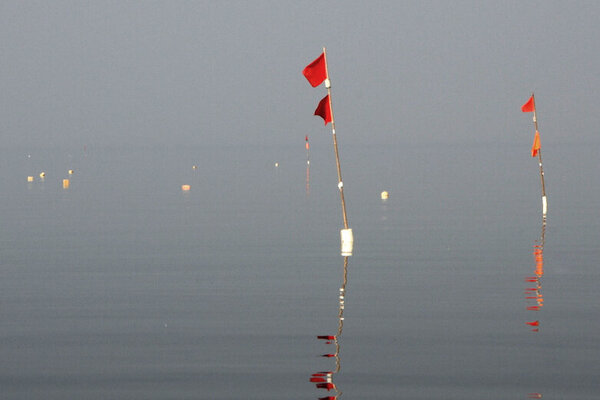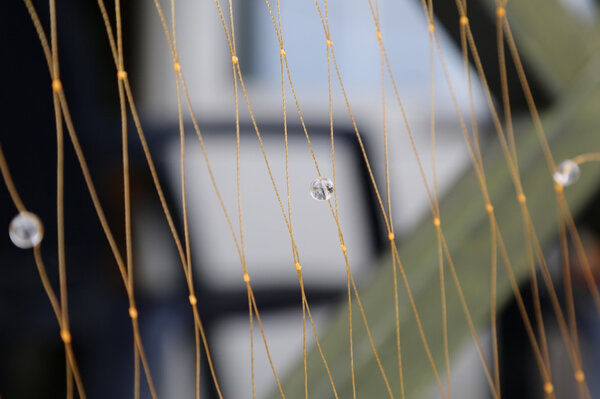Expertise
Bycatch in gillnet fisheries
Christian von Dorrien and Daniel Stepputtis | 01.11.2021
Gillnets are made from very thin material so that they are nearly invisible not only for fish but also for other animals. Thus, for example harbour porpoise (Phocoena phocoena) or diving sea birds get entangled in the nets and drown.
In gillnet fisheries, nets are not pulled through the water but set directly on the sea floor and anchored so that the nets are floating in the water. These gillnets or entangle nets are a highly selective catching method for the target species, because only fish of a certain size get entangled in the meshes with their gills (thus the name of the net). However, the nets are made from very thin material so that they are nearly invisible not only for fish but also for other animals. Thus, for example harbour porpoise (Phocoena phocoena) or diving sea birds get entangled in the nets and drown. These bycatches are not wanted by fishermen, and can threaten the affected populations of sea birds or marine mammals if too many individuals die.
PAL - Porpoise Alert
But because these pingers also contribute to more noise in the marine environment, they are seen as an interim solution only, until alternative catching methods are developed and used to avoid those bycatches.
For populations of sea birds, gill nets are especially dangerous if they are deployed in areas where large numbers of sea birds are resting or moulting. Many of these areas are protected by the EU Birds Directive, in German marine areas several of these areas have already been implemented. The Thünen Institute investigates the problems on several levels. We want to get better data about fishery efforts and rates of bycatch of affected species. Additionally, we are developing alternative catching methods that have as low bycatch rates as possible and test them in practice.
Acrylic glass beads as echo amplifiers
The project STELLA, carried out by the Thünen Institute for Baltic Sea Fisheries, is pursuing a completely different approach: with the help of modifications in the meshes, the "audibility" of the gillnets for harbour porpoises is to be increased. Small beads made of acrylic glass with a diameter of just under 9 mm proved promising. The beads reflect the sounds of the whale more strongly. This resonance effect makes the beads appear much larger to the whales and the net is perceived as an obstacle. These beads were inserted into the nets at regular intervals.
Gillnets still problematic for seabirds
Gillnets can be particularly dangerous for seabird populations where birds are resting or moulting in large numbers. To date, there are no net modifications to reduce seabird bycatch that have proven practicable. Many seabird areas are therefore to be protected by the EU Birds Regulation. In German marine areas, several corresponding areas have already been designated.
The Thünen Institute is investigating this problem at various levels. For example, we want to collect better data on fishing effort and bycatch rates of the species concerned to get a clearer picture of the actual effects. Year-round closures of larger areas would have significant socio-economic impacts for fisheries, but also for downstream economic sectors (processing, port industry, tourism).








